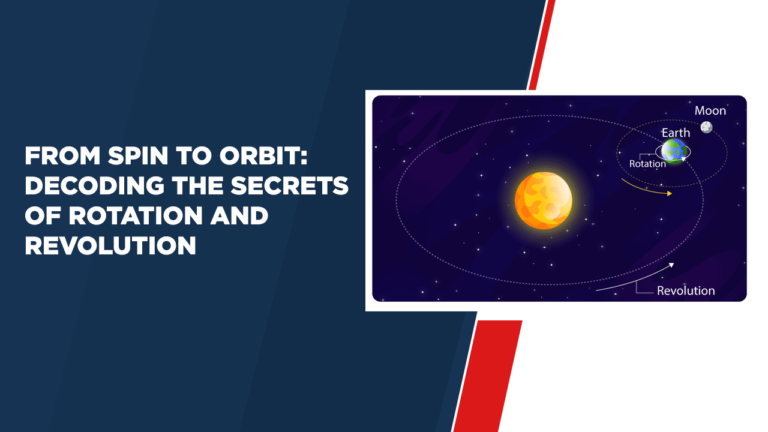From Spin to Orbit: Decoding the Secrets of Rotation and Revolution
Introduction: Unveiling the Dance of Earth’s Rotation and Revolution
The celestial ballet performed by our planet, Earth, involves two fundamental movements that shape our daily lives and the changing seasons: rotation and revolution. These complex motions have profound effects on our planet’s climate, geography, and the passage of time. In this article, we take an in-depth look at the concepts of rotation and revolution, highlight their differences, examine their effects, and provide a clear understanding of their significance.
Understanding Rotation and Revolution: What Sets Them Apart
Rotation: Spinning on its Axis
Rotation refers to the movement of the Earth around its axis, which is an imaginary line that runs from the North Pole to the South Pole. This rotation is responsible for the change of day and night. As the Earth rotates, different parts of its surface are exposed to sunlight, creating a cycle of day and night. The Earth takes about 24 hours to complete one complete rotation, giving us the day-night cycle.
Revolution: The Orbital Dance around the Sun
Revolution, on the other hand, involves the Earth’s travel around the Sun in an elliptical orbit. This proposal takes approximately 365.25 days to complete, giving rise to the concept of a year. As the Earth rotates around the Sun, we experience changes in weather due to the varying distances and tilts of its axis.
Difference between Rotation and Revolution
The main difference between rotation and revolution lies in the axis around which each motion occurs. Rotation involves the Earth’s rotation on its axis, causing the cycle of day and night, while revolution is the Earth’s orbital motion around the Sun, marking the passing of the seasons and years.
Effects of Rotation and Revolution: Shaping Our World
Day-Night Cycle and Its Impact
The rotation of the earth creates the cycle of day and night. As it rotates, sunlight illuminates different parts of the planet’s surface, allowing photosynthesis, temperature changes, and human activities influenced by daylight.
Seasonal Changes and Climate Patterns
The Earth’s rotation around the Sun is responsible for the changing seasons. The tilt of the Earth’s axis results in sunlight arriving at different angles throughout the year, creating distinct climate patterns associated with each season. This phenomenon affects agriculture, wildlife behavior and even human mood and activities.
Conclusion: The Eternal Dance Continues
In the grand cosmic display of our universe, Earth’s rotation and rotation play a major role. Rotation brings the rhythm of day and night, while revolution paints the canvas of the changing seasons. These intertwined activities are not only scientific phenomena but also forces that shape the fabric of our existence. From the simplest daily routines to complex ecosystems, the effects of rotation and revolution remind us that we are part of an amazing dance that has been going on for billions of years.



